| |
| |
| |
| Presented By Raytheon Intelligence & Space |
| |
| Axios Space |
| By Miriam Kramer · Sep 06, 2022 |
| Thanks for reading Axios Space. At 1,154 words, this newsletter is about a 4½-minute read. - Please send your tips, questions and Moon rocks to miriam.kramer@axios.com, or if you received this as an email, just hit reply.
|
| |
| |
| 1 big thing: What the Moon can tell us about Earth |
 |
|
| Illustration: Annelise Capossela/Axios |
| |
| The Moon is a time capsule that could provide key information about Earth's ancient history. Why it matters: Understanding the early history of our planet and our Moon could help scientists figure out more about how the planets formed and even how life eventually took hold on our world. - "When you look at the Moon, you're looking at not just a neighbor in space, but kind of an extension of the Earth," NASA Moon scientist Noah Petro tells Axios.
- "I like to kind of glibly think of the Moon as the eighth continent of the Earth."
The big picture: As NASA aims to send astronauts back to the Moon for the first time since Apollo as part of its Artemis program, scientific attention is now turning to the Moon, with researchers hopeful that some of their outstanding questions will be answered. - Instead of visiting just a few landing sites once like the Apollo missions, Artemis aims to create a sustainable presence on the Moon.
- That would allow researchers to gain a deep understanding of that part of the lunar surface and potentially stage missions to other areas.
- "Part of the area where the Artemis missions will be exploring is on the rim of this enormous basin," Petro added. "We don't know how old it is. So for me, understanding the age of that crater becomes a very important point in the history of the Earth and the Moon's history in its formation."
How it works: The movement of Earth's tectonic plates constantly churns away craters and older crust, effectively hiding geological evidence of our planet's ancient past. - But the Moon — widely believed to have formed after a collision between Earth and a rocky body called Theia — is a record of that history.
- Because the Earth and the Moon occupy the same part of space, the craters — formed from collisions — seen on the Moon are likely representative of the same kinds of activity that happened on our planet as well
- Studying those craters could allow researchers to piece together just what was happening in space millions — if not billions — of years ago, possibly giving them clues about how life arose, how water was delivered to our planet, and how the Earth's crust, mantle and core evolved.
- Earth's "early record is lost, and we think it may have been really critical to when life was able to form on Earth," planetary geologist Brett Denevi, of Johns Hopkins University Applied Physics Laboratory, tells Axios. "It shapes that habitable environment and really affects it."
Background: Analysis of Moon rocks brought back to Earth during the Apollo program has allowed scientists to get a good idea of how old certain parts of the Moon are and its composition. - But those missions only went to a limited number of landing sites in the equatorial region, leaving scientists with more questions to answer.
- And more recent robotic missions have uncovered other lunar mysteries.
- "We went to these really wonderful locations," Petro said. "All of the six landing sites are really amazing. But we never went back."
Share this story. |
    |
| |
| |
| 2. Axiom heading back to the ISS |
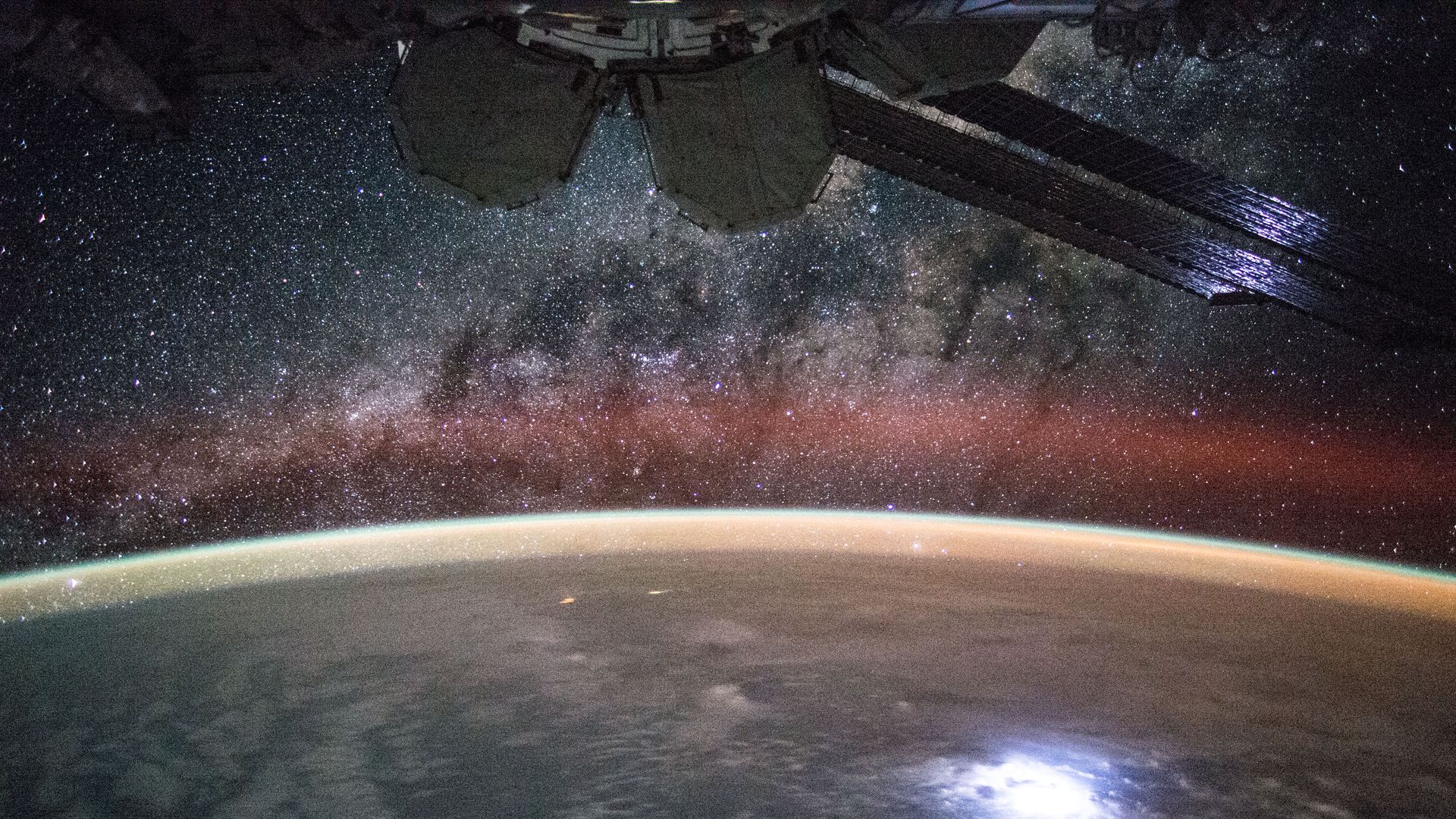 |
|
| A time-lapse photo taken from the ISS, partially seen at the top of the image. Photo: NASA/Kjell Lindgren |
| |
| Axiom Space is planning to send another crew of private space explorers to the International Space Station in 2023. Why it matters: This will be the company's second crew to visit the space station and furthers NASA's goal of opening up the orbiting outpost to more commercial activities. What's happening: NASA and Axiom announced last week that they signed an order for the new mission to send four private individuals to the ISS. - The crew will launch from Cape Canaveral aboard a SpaceX Dragon capsule for a 10-day stay aboard the station.
- Axiom has not yet announced the full crew, but said last year that former NASA astronaut turned Axiom employee Peggy Whitson would command this mission and race-car driver John Shoffner would act as pilot and passenger.
- "[W]e are also hoping these private astronaut missions will help the industry learn and develop the skillset to conduct such missions, and NASA is benefitting from gaining additional capability, particularly with returning additional cargo from the space station," NASA's Phil McAlister said in a statement.
The big picture: NASA eventually wants to move from being a provider of services in low-Earth orbit to one of many customers for companies operating in that part of space. - When the ISS eventually comes to an end by the end of the decade, NASA hopes to have private space stations in orbit to send their astronauts to and conduct research.
- For its part, Axiom has said it wants to build a private space station in orbit, serving as one of those destinations for NASA and other users one day.
|
    |
| |
| |
| 3. Artemis standing down |
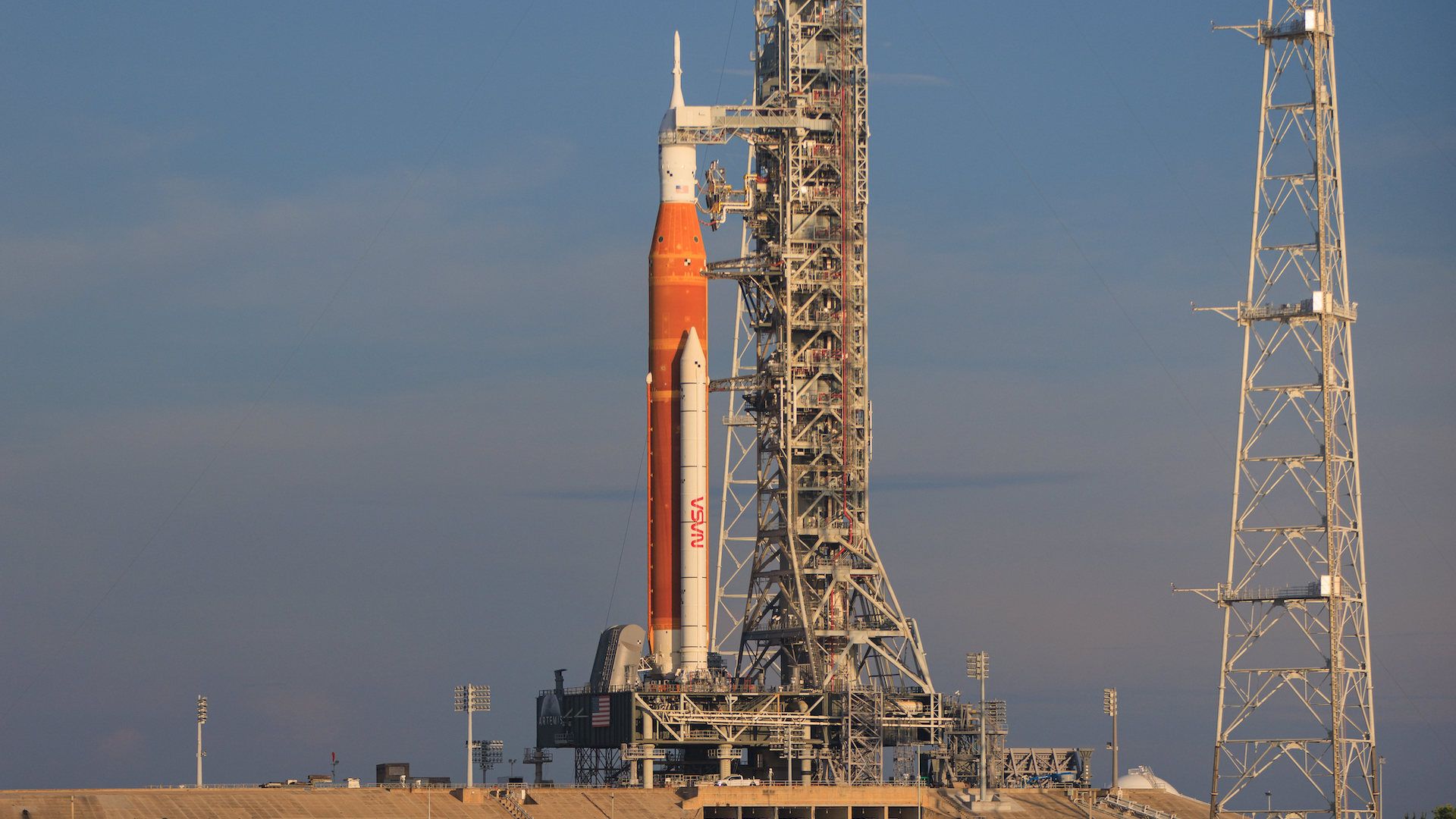 |
|
| The SLS rocket on the pad. Photo: NASA/Frank Michaux |
| |
| NASA is standing down from trying to launch its Space Launch System rocket and Orion capsule, instead opting to target a launch window later this month or in October. Why it matters: The much-anticipated Artemis I mission is the first of many launches designed to create a sustainable program returning people to the surface of the Moon for the first time since the 1970s. Catch up quick: The space agency called off the launch on Saturday after a hydrogen leak popped up during fueling that they weren't able to correct in time to get off the pad. - NASA engineers will decide how best to fix the issue this week.
- "We're not going to launch until it's right," NASA administrator Bill Nelson said during a post-scrub press conference Saturday.
- This delay comes after technical issues scrubbed an earlier launch attempt on Aug. 29.
How it works: Liquid hydrogen is a particularly difficult fuel to work with. - Hydrogen atoms are incredibly small, so even a little gap in a seal can create a leak significant enough to call off a launch.
- The space shuttle also used hydrogen fuel and was often delayed because of leaks.
The big picture: NASA is planning to send people back to the lunar surface in 2025, with multiple SLS launches scheduled between now and then. - This mission is designed to test out systems that will be needed to safely send people to the Moon.
- For this flight, the SLS is expected to send Orion on a journey around the Moon before the capsule comes back in for a landing on Earth, splashing down in the Pacific Ocean.
|
    |
| |
| |
| A message from Raytheon Intelligence & Space |
| Monitoring ocean biology from 22,000 miles up |
| |
 |
| |
| Around here, there's nothing everyday about every day. From the James Webb Space Telescope to next-generation GPS constellations to global climate monitoring, Raytheon Intelligence & Space is creating solutions that make the world smarter, safer and more connected. Join our team. |
| |
| |
| 4. Out of this world reading list |
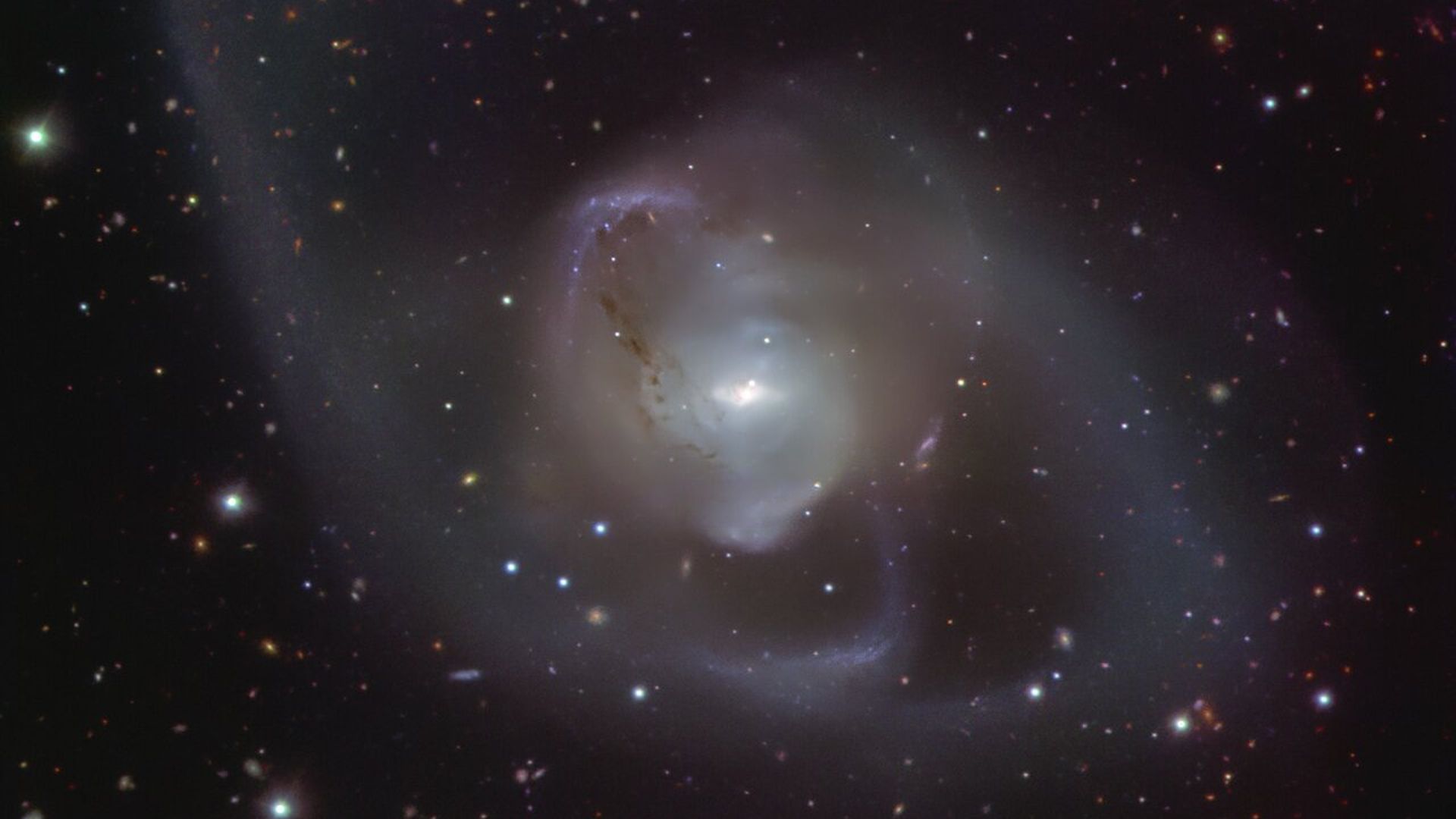 |
|
| The galaxy NGC 7727 seen by the Very Large Telescope. Photo courtesy of ESO |
| |
| 🩸Astronauts' blood shows signs of DNA mutations due to spaceflight (Elizabeth Howell, Space.com) 🎵 Why is NASA's hold music so catchy? (Marina Koren, The Atlantic) 🪐 Frank Drake, who led the search for life on other planets, dies at 92 (Dennis Overbye, New York Times) 💥 When galaxies collide (Axios) |
    |
| |
| |
| 5. Weekly dose of awe: The Andes from orbit |
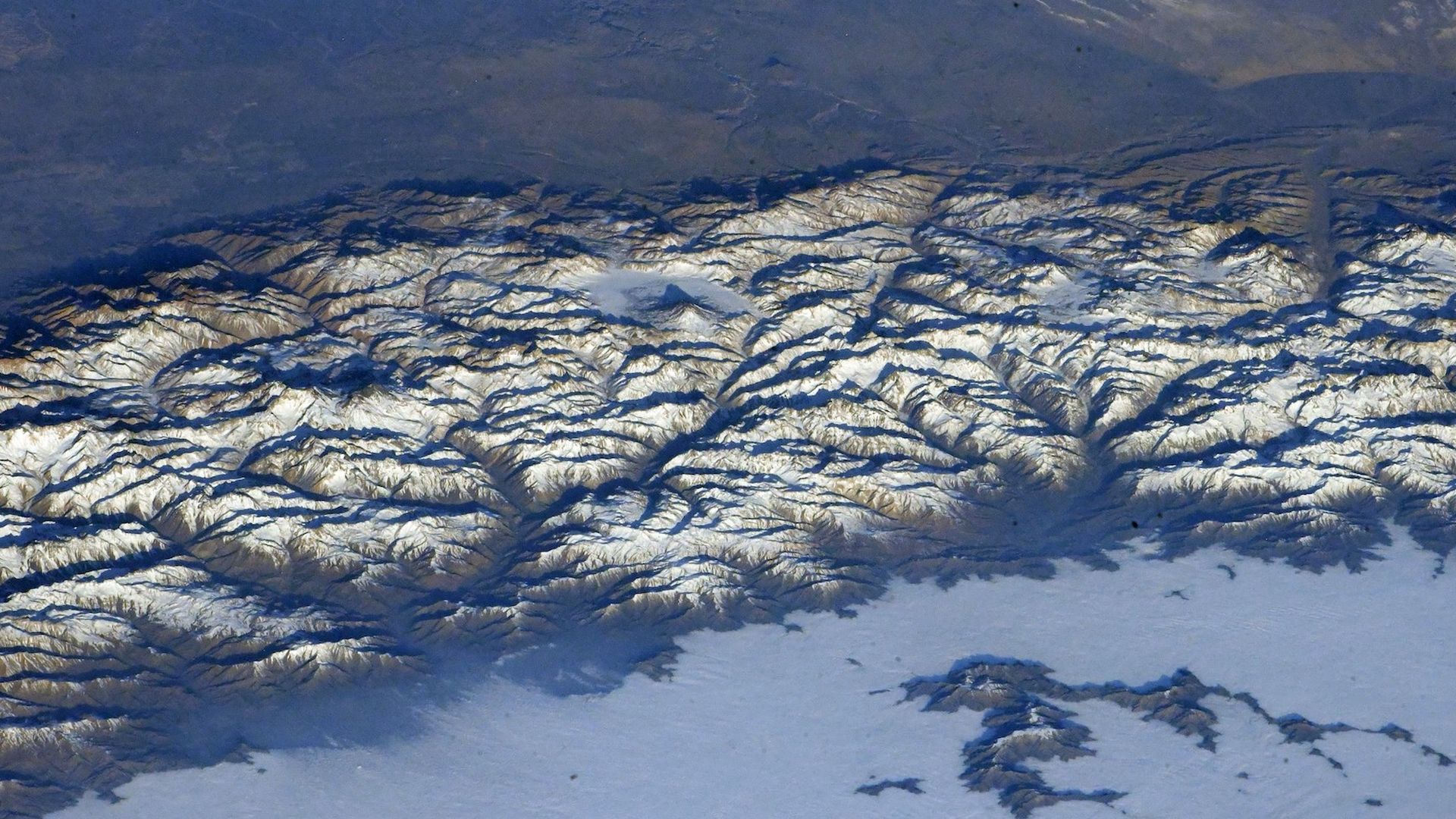 |
|
| Photo: ESA/NASA-S.Cristoforetti |
| |
| If I went to space, I'd just spend all my time gazing down at mountain ranges. - This photo of the Andes Mountains was snapped by European Space Agency astronaut Samantha Cristoforetti from her post onboard the ISS.
- "A pass over the Andes just before sunset," Cristoforetti tweeted. "Love the long shadows over the mountains!"
|
    |
| |
| |
| A message from Raytheon Intelligence & Space |
| Tracking incoming asteroids |
| |
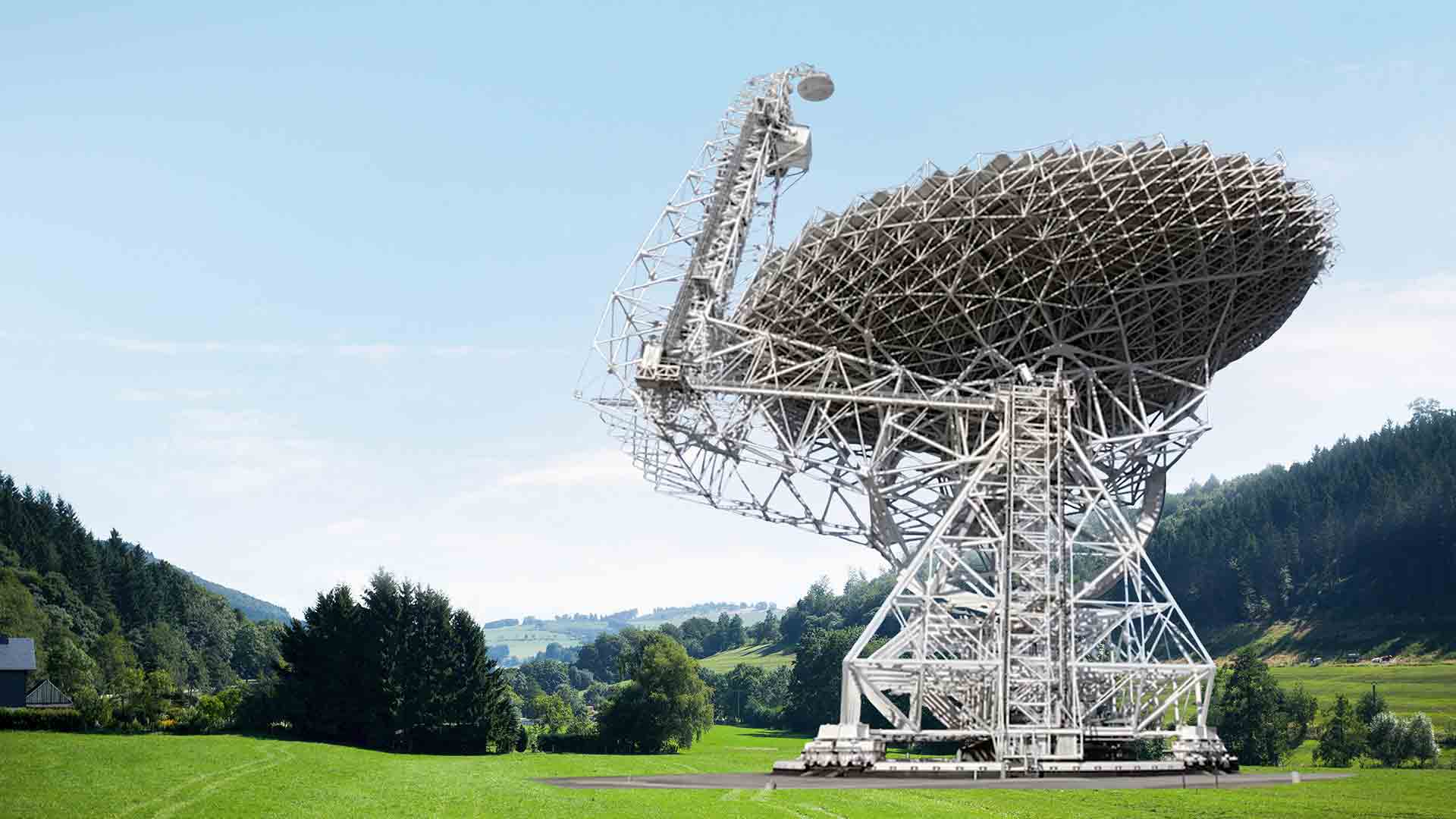 |
| |
| Around here, there's nothing everyday about every day. From nanosatellites to ground stations to cyber technologies you can only imagine, Raytheon Intelligence & Space is looking for talent to push the boundaries of discovery across Earth, space and beyond. Join our team. |
| |
| Big thanks to Alison Snyder and Sheryl Miller for editing this week's edition and to Annelise Capossela for the great illustration. If this newsletter was forwarded to you, subscribe. 🚀 |
 | | Are you a fan of this email format? It's called Smart Brevity®. Over 300 orgs use it — in a tool called Axios HQ — to drive productivity with clearer workplace communications. | | |
No comments